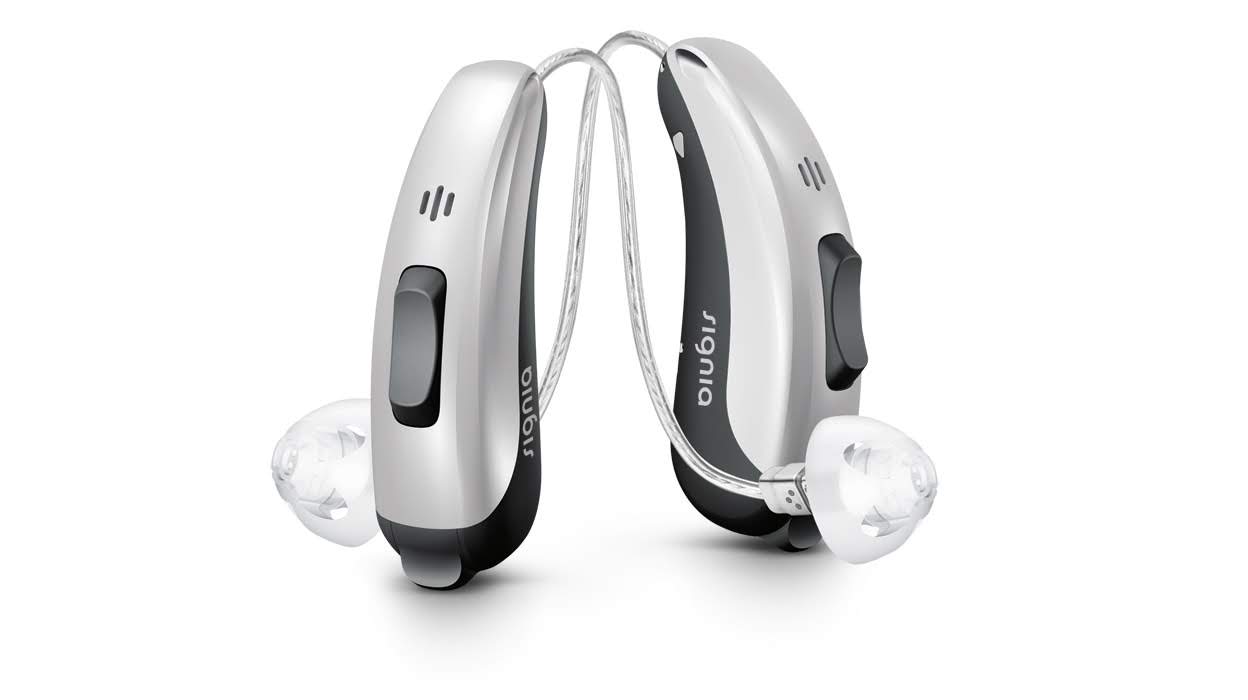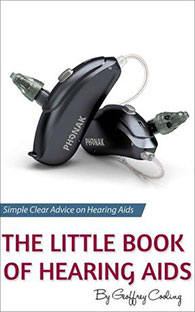Natural Own Voice Sound, Fantastic Connectivity and Access To Telecare
I have been wearing a set of Signia Pure 312 7 Nx hearing aids for the last week, and I have to say I am pretty impressed with them. I am going to have to break this run-down into a few articles because there really is so much to talk about. Great sound quality, direct connection to an iPhone, pretty impressive in noisy situations and pretty astonishing Own Voice Processing (they aren't joking about this). All of that and so much more, let's talk about the latest hearing aids from Signia.

The Look, Pretty Svelte
First off, they look really pretty, mine are silver with a matching silver bottom and button. The shape is really nice and they look pretty svelte. They are a pretty small, light and discreet 312 receiver in canal device and they sit really well on the ear. The ergonomic shape of the inner case of the aid and the receiver wire hold them very well on the ear. The battery door is really easy to use and allows you to turn the aid off without opening the battery door fully. The rocker switch on the back is easy to use with good tactile feel when you are pressing it. All in all, it's a pretty device.
The Fitting
I wouldn't normally talk about the fitting of hearing aids but in the case of the new Signia Nx, I think I need to make an exception. Primarily because of their new astonishing Own Voice Processing feature. Typically when hearing aids are fitted, the user considers their own voice both unnatural and loud. Up to now, it did not matter what brand of hearing aids were used, it was always the same thing. Let's talk about that before I go on.
Dealing With The Own Voice Problem
Basically what we do is reduce the amplification in certain frequencies to make the user's voice more acceptable. However, it still doesn't necessarily make it completely palatable and in reducing the amplification we are also reducing the amplification for certain speech sounds.
As the user rehabilitates, we tend to increase the amplification towards the prescription however, we may still have to keep some of the frequencies under-amplified. The user generally gets used to the sound of their own voice, however, getting used to it and liking it are probably two very different things. In essence, no matter what steps we take, the result is a compromise between sound quality and overall audibility. Some of the problems are in the amplification of the user's voice, some of the problems are caused by the occlusion effect.
Delivering A Natural Sounding Own Voice
Signia has developed a completely new way to deal with the own voice issue. Basically what they have done is used some of their outstanding directionality features to identify the user's voice and remove it from the overall amplification strategy. They do this by separating the user's voice and processing it with a separate processor. I don't want to bog you down in the details, I just want to explain the difference it makes from my first-hand experience. It delivers a natural sounding own voice experience which will mean easier and quicker acceptance.

Confused About The Right Hearing Aid For You?

Our buying guide, easing the confusion with clear easy to understand info, we guarantee it will help you pick the right hearing aid for you.
Closed Domes, No Damned Acoustic Occlusion!
Okay, I need open fit hearing aids, I have a high-frequency hearing loss with excellent low frequencies. I also suffer from some nasal problems and hence some mild mid ear problems. In essence, if you close up my ear canals I find the occlusion effect really irritating, in fact, more than irritating, it can drive me a little mad. Hence I always wear open domes on my hearing aids. This helps to reduce the effect of the own voice problem, but I still suffer it a little. I am relatively stoic about stuff mostly, so I just get on with it.
When I was fitted with the Nx I was fitted with closed domes, I thought this isn't going to work as I heard my voice explode in my head. Then, we went through the own voice training protocol (count from twenty-one until it is happy it knows your voice). The feature was turned on, and no more occlusion, just like that. I was a bit speechless (that doesn't happen very often). By no more occlusion I mean no more auditory occlusion, I wasn't caused any difficulty by my own voice.
Because of my middle ear problems which are playing up a bit at the minute, I still felt some physical occlusion, (which is very different from acoustic occlusion) from the closed domes. I eventually changed to the open domes, however, I think if I didn't have the slight mid ear problems, I would have had no issues at all. You know what, that is pretty damn impressive. Really damn impressive. There is an argument for sealing the ear when wearing hearing aids, I mean we do all this amazing stuff with hearing aid features and directional microphones and then we leave the ear open and let some sound in naturally.
That probably doesn't make sense and it isn't the best use of the hearing aids. However, because of occlusion, that is what we need to do. What Signia has done with this new feature means that we may well be able to seal up more ears and let the features do what they do. That's an interesting thought and one that I think will develop with more innovation within the feature. Enough navel gazing, what does this mean to you, the prospective user?
Pretty Damn Good
It means that they are pretty damn good and it will be pretty easy for you to accept them. In the next article, I will discuss some of the features, how they work and what they do in real life, stay tuned folks, these are pretty cool kit and you will want to know how they perform.
You can read the second part of this post here: Everyday Experience With The Signia Pure 312 7 Nx Hearing Aids, What You Need to Know









